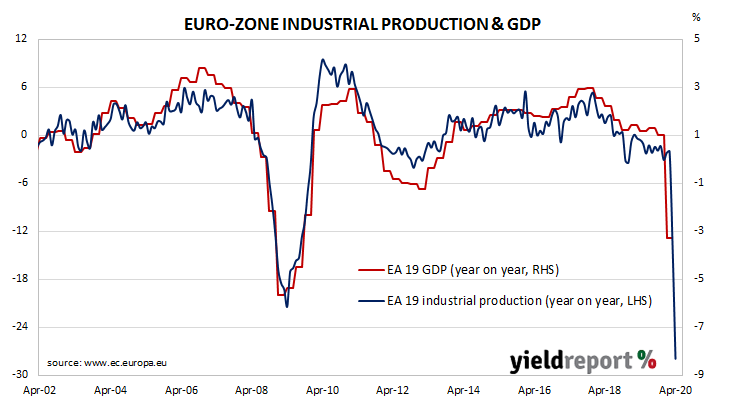Summary: eurozone industrial production suffers another huge contraction in April; monthly figure better than consensus estimate, worse than March; contraction worse in large economies.
As with other countries’ measures of industrial production, Eurostat’s industrial production index measures the output and activity of industrial sectors in euro-zone countries in aggregate. Following a recession in 2009/2010 and the debt-crisis of 2010-2012 which flowed from it, euro-zone industrial production recovered and then reached a peak four years later in early-2016. Growth rates then fell and recovered through 2016/2017 before beginning a steady and persistent slowdown from the start of 2018. That decline was transformed into a plunge in March 2020.
According to the latest figures released by Eurostat, euro-zone industrial production contracted by a seasonally-adjusted 17.1% in April. The fall was not as much as the -20% which had been expected but it was a larger one than March’s 11.9% drop after revisions. On an annual basis, seasonally-adjusted growth in industrial production went further into reverse, from March’s revised rate of -13.4% to -27.9%*.
NAB currency strategist Rodrigo Catril said, “The hope is that April should represent the nadir inactivity, given the easing of lockdown restrictions.”
French and German 10-year bond yields moved in opposite directions on the day. By the close of business, the yield on German 10-year bunds had shed 3bps to -0.44% while the French 10-year OAT yield had gained 4bps to -0.04%.
Industrial production plunged across all four of the largest euro-zone economies. Germany’s industrial production dropped by 21.0% while comparable figures for France, Spain and Italy were -20.3%, -22.4% and -19.1% respectively.

